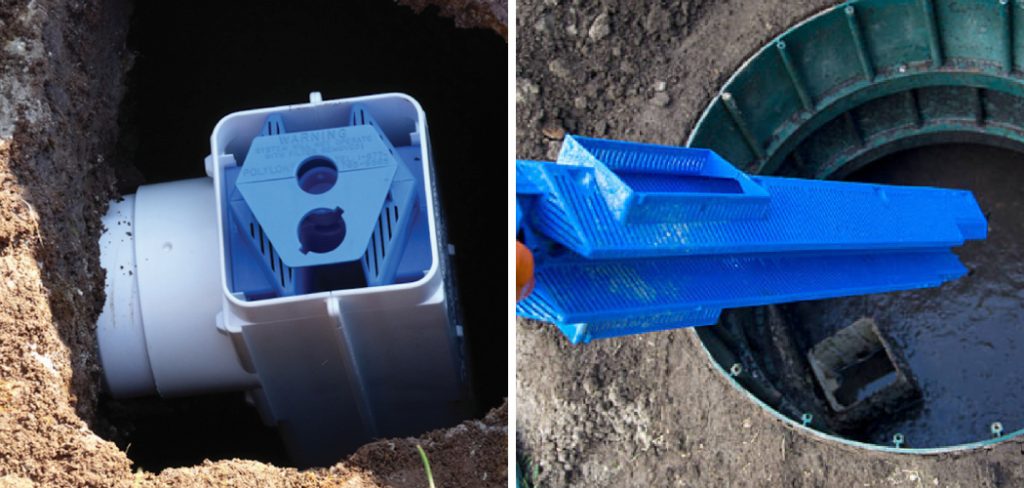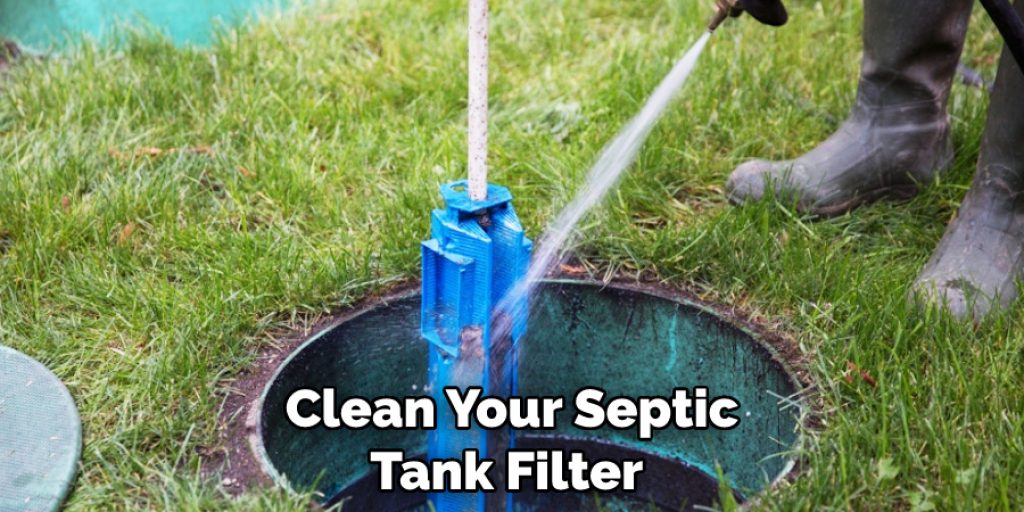How to Clean Septic Tank Filter
Septic tanks are essential to the functioning of most households, keeping our drains free from clogs and backed-up sewage. Maintaining a healthy septic tank is vital for any property owner, yet many are unaware of the importance of cleaning their septic tank filter. Neglecting your septic’s filter can wreak havoc on your system, leading to costly repairs or even replacements down the line.

But one of the overlooked parts in taking care of a septic tank is changing its filter. Not only does this prevent blockages, but it also helps your system run more efficiently. In today’s blog post, we’ll discuss why you should clean your septic tank filters regularly and provide step-by-step instructions on how to clean septic tank filter to do so safely and effectively.
By following these steps properly and regularly, you can keep your system working at its peak performance while protecting it from potentially damaging buildup that could occur if left unattended!
Why Do You Need to Clean Septic Tank Filter?
1. Prevent Clogs
Having a septic tank filter is essential to maintain the proper levels of wastewater in your system. The filter prevents visible solids and oils from entering the drain field, which may cause clogs or other problems with your drainage system.
2. Keep Sewage Systems Running Smoothly
Regular cleaning of your septic tank filter ensures that no build-up or residue has accumulated, which could cause blockages or other issues. This will ensure the wastewater is able to flow properly and keep the system running smoothly.
3. Improve Efficiency
When you have a clean filter, you are also ensuring that the septic tank system is running at peak efficiency. This can save money on repair bills and other costly services.
4. Protect the Environment
Cleaning your filter will help to protect the environment from hazardous chemicals or other pollutants that may be released in untreated wastewater. This is especially important if you have a well or other water source near your septic tank.
Overall, clean filters are essential to keeping your septic tank system running smoothly and efficiently. By regularly cleaning your filter, you can help protect the environment and extend the life of your system.

Signs that You Need to Clean Your Septic Tank Filter
If you notice any of the following signs, your septic tank filter likely needs cleaning:
- Slow-draining toilets and sinks
- Disturbance in plumbing fixtures
- Gurgling sounds coming from drains
- Foul odors coming from your drains
- Water pooling around the area of the septic tank
Required Items
Before starting to clean the septic tank filter, you will need to gather the required materials. These include cleaning supplies such as
- White vinegar,
- Baking soda, and
- A brush with soft bristles. You may also need
- Rubber gloves and
- Safety goggles for protection against the bacteria present in the septic tank.
Once you have gathered these items, you can start the cleaning process.
10 Ways How to Clean Septic Tank Filter
1. Turn off Power Supply
Turn off the power supply to the septic tank filter. This is important to prevent any potential electric shock. It might also be necessary to shut off the valve that supplies water to the tank. Also, make sure to wear the safety gear mentioned above.
2. Open the Cover of the Filter
Open the cover of the filter and remove the filter element from the tank. Place it on a flat surface for cleaning later. Also, remember to wear rubber gloves when doing this.
3. Disassemble the Filter Element
Disassemble the filter element and remove any debris present in it. This could be things like leaves, twigs, or other debris that have been collected during use of the filter. Carefully inspect each component for any signs of damage before continuing with the cleaning process.
4. Soak the Filter Element in Vinegar
Take the filter element and soak it in a solution of white vinegar and water. The ratio should be approximately 1:1, but can vary depending on how much debris is present. Allow this to sit for at least 15 minutes before continuing with the cleaning process.
5. Scrub the Filter Element
Take a brush with soft bristles and scrub the filter element to remove any remaining dirt and debris. Make sure to pay special attention to hard-to-reach areas, such as crevices or tight spaces.
6. Rinse Parts of the Filter Element
Rinse the parts of the filter element with clean water to make sure that all the soap and vinegar are washed away. It is also a good idea to inspect each piece for any signs of damage or corrosion.

7. Soak Parts in Baking Soda
Take the parts of the filter element and soak them in a solution of baking soda and water. This will help neutralize the vinegar and leave a fresh odor in the tank. Allow this to sit for at least 10 minutes before continuing with the cleaning process.
8. Rinse Parts Again
Rinse all parts of the filter element again with clean water to make sure that any remaining soap or baking soda is washed away. Rinsing will also ensure that all of the filter element is clean and free from any dirt or debris.
9. Reassemble the Filter Element
Reassemble the filter element and place it back into the tank. Make sure to check for any signs of damage or corrosion before doing so. The elements should fit snugly but not too tight to prevent any damage.
10. Turn on the Power and Water Supply
Once the filter element is back in place, turn on the power supply and water supply to the septic tank. This will help ensure that everything is working properly and will allow you to use your tank without worrying about clogs or other issues.
Follow these steps to keep your septic tank filter clean and in good working order for years to come. With regular maintenance, you can ensure that your system continues to work efficiently and safely.
8 Safety Measures to Follow
1. Wear protective clothing such as gloves, goggles, and a face mask to protect yourself from any debris or bacteria that may be released. Otherwise, use a dust mask to avoid inhaling any airborne particles.
2. Before you start cleaning, make sure the septic tank filter is shut off so that no more material can enter it while you’re working on it. Also, turn off the power supply and ensure that all electric motors are switched off.
3. Make sure to open any access panels or hatches so you can reach the filter easily. The filter is usually located at the bottom of the septic tank.

4. Carefully remove the filter from its housing and inspect it for any blockages or foreign material that may be causing a problem. If there is debris, use a garden hose to flush it out. While removing the filter, be sure not to damage any of the surrounding parts.
5. Clean the filter with a brush and soapy water or an industrial cleaner like bleach. Use caution when using cleaners as they can be hazardous. Rinse thoroughly with clear water. The water should also be used to flush out any remaining debris.
6. Once the filter has been cleaned, inspect it for signs of corrosion or wear and tear. If you find any, replace the filter with a new one.
7. After replacing or cleaning the filter, put it back in its housing and make sure to secure all access panels or hatches before you turn on the power supply again.
8. Lastly, if anything looks out of place or malfunctioning, call a local septic tank professional for assistance. It’s important to make sure you complete the job safely and effectively.
Following these steps will ensure that your septic tank filter is properly cleaned and maintained. Doing so can help avoid any costly repairs or replacements down the line. Keeping up with regular maintenance will also ensure that your septic tank is running optimally, keeping your home and family safe.
Frequently Asked Questions
How Often Should You Clean Septic Tank Filter?
It is recommended that you clean your septic tank filter at least every six months. Regular cleaning and maintenance of your septic system will help ensure it operates efficiently and properly. Depending on the size and type of system, you may need to clean your filter more frequently. If your system sees a lot of use, it’s advisable to clean it more often.
How Long Will It Take to Finish the Project?
The amount of time it takes to clean your septic tank filter will depend on the size and type of system you have. Generally, it should take anywhere from a few hours to a full day to complete the task.

Conclusion
Taking care of your septic tank filter is an important part of maintaining the overall health and efficiency of your system. Joy that comes from knowing that you have a well-functioning septic system will be unparalleled. When you’re armed with the right knowledge, as outlined in this article, cleaning your filter can be done quickly and easily. With regular maintenance, your filter can provide years’ worth of trouble-free use.
Additionally, it is always important to contact professional septic system specialists if you are ever in doubt about how to properly and safely inspect or clean your filter or it is damaged beyond self-repair. With these tips on how to clean septic tank filter and with proper maintenance and care for your septic tank filter, you’ll have peace of mind knowing that your home remains healthy and efficient year after year.




